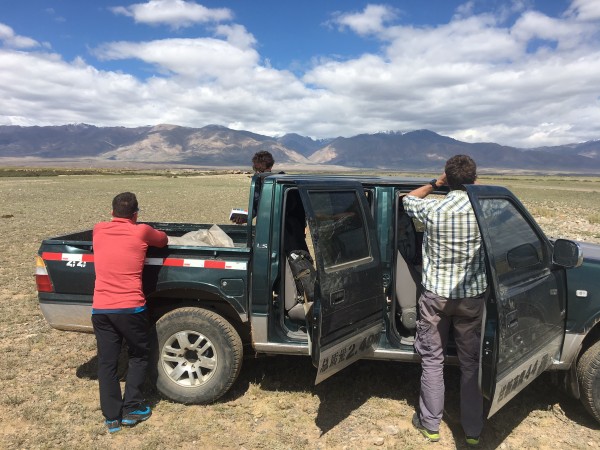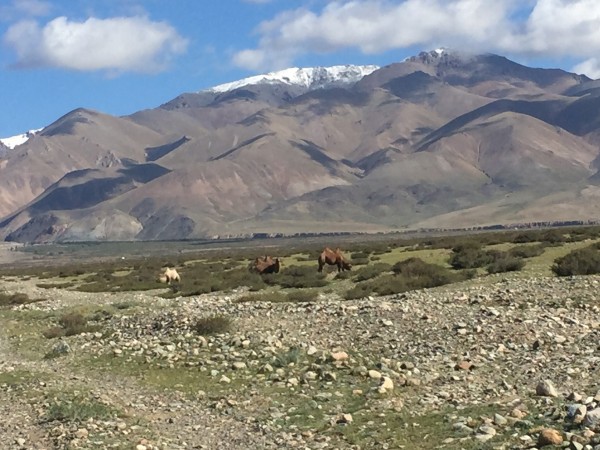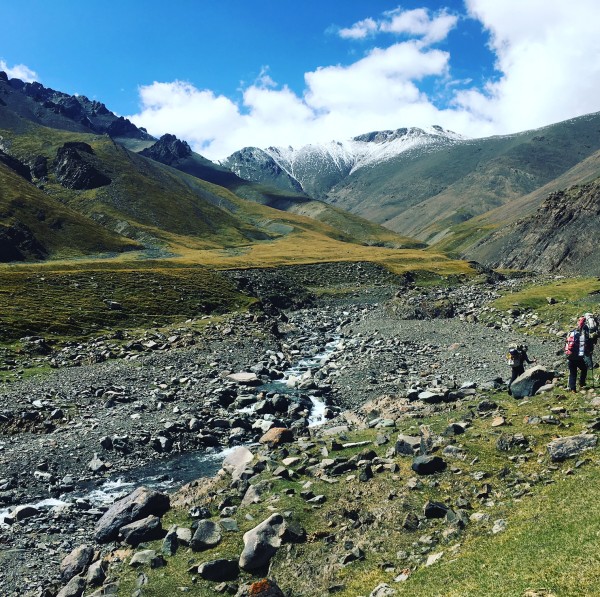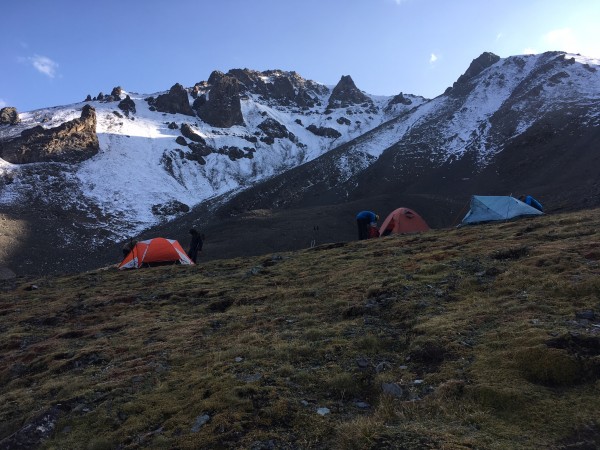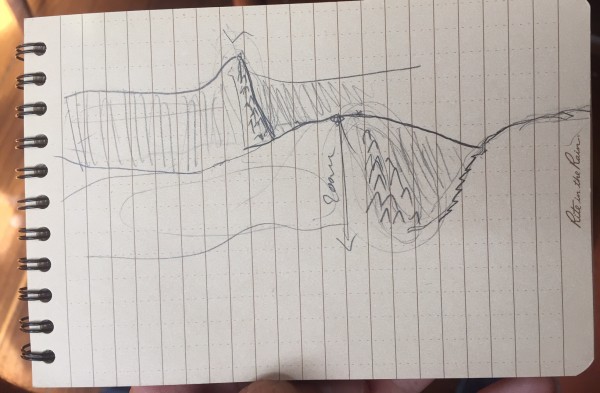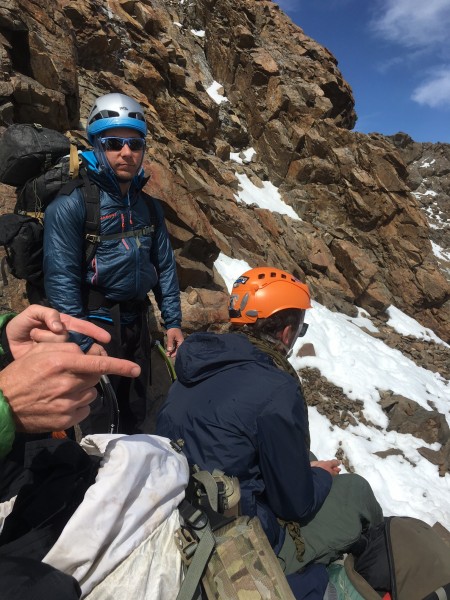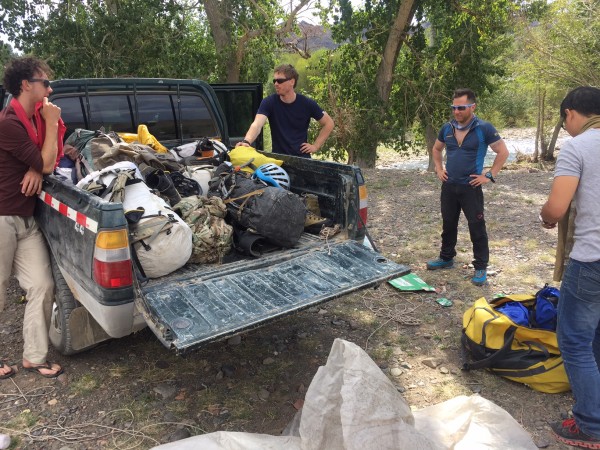Talk of doing the first documented ascent of sauyr zhotasy has existed for years. Though not high at 3840m, a topographic prominence of 3250m makes it perhaps the highest of any unascended peak. Along with this arbitrary distinction, the small range and its glaciers hold the distinction of being the most remote from any ocean on earth. That it sits on the China-Kazakhstan border across hundreds of kms of steppe and desert only adds to the mountains obscurity.
Data on the peak was near-impossible to find, mostly hearsay and projection and no reliable photos. As usual, satellite images were taken with snow covering much of what we wanted to see.
Months of attempted correspondence with Chinese authorities and expedition companies resulted in disinterest, inability and paranoia on their behalves due to the hazy security matters of Xinjiangs borders. Taking matters into our own hands we decided to go with trusted friend, expedition collaborator and logistics genius Alex Tang from Chengdu.
The unusual objective needed a team skilled far beyond just the climbing demands who could happily shoulder Xinjiangs unforeseeable elements both bureaucratic and alpine. With Alex literally at the wheel we were Eric Kowalski, Dr Alex Mathews, Mitch Murray and Ed Hannam, all with track records in desperate parts of the world and well equipped with a strong sense of humour in the absurd.
From the razor wire, Uygher restaurants and exotica of Urumqi, Xinjiangs capital, we crossed the Dzungarian basin to Hoboksar, a camel trading outpost nearest the Kazakh border we would launch from. Aside from excellent dumplings, Hoboksar was deeply locked down with border paranoia, entailing soviet-like security checks at every step. The Sauyr Range loomed beguilingly beyond the hotel windows, with only 25km of Gobi between us, but we took pains to conceal our interest in an ascent stating we were camel-watchers instead.
Prepared for anything from desert crossings to cold alpine bivys, rain and baking heat, glaciers and technical mixed climbing, we crossed the expanse of endorheic Gobi to find intimidating patrol posts at the head of each valley, beyond which 1000m alpine walls, glaciers, huge buttresses and snowy plateaus beckoned. Through binoculars we considered options ranging from the conservative to the cavalier, and retreated to Hoboksar for permits, only to be blocked at even the idea by military wishing wed just go away.
Paranoid of being detained for any bravado, we gambled on attempting Sauyr Zhotasys glaciated main peak via a distant valley system – the only one within striking range without a border post at the entrance, and grazed by nomads living along tumbling, melt-fed streams. This route would mean summiting the ranges eastern summit at 3750m before a long traverse of the ridges between.
With week-length loads we had 1800m of prominence across 8kms of approach, the majority of the altitude gain over only 500 horizontal meters up to the snowline at 3500m. Below the snow we made a launch camp to set us up for the eastern peak,. from which summit followed about seven kms of exposed ridge lines to the main peak, or so it appeared.
A second day of endless scree and boulder fields merging into 50o snow bought us to the base of the east peaks headwall; a crumbly mass of unstable rock and ice with no safe bivy spots tho great views down the valley back towards the Tarbagatai Desert and its strange ranges of eroded mountains.
Murray and Hannam soloed a rising traverse around the headwall, emerging onto the summit plateau where Hannam continued the 1000m to the eastern peaks true summit through knee deep snow whilst Murray went to survey the northern aspects with views far into northern Kazakhstan. Despite the summits highest point having no signs of activity, a lower feature at approx 3600m - perhaps visible from other vantages - had a series of three possible ancient cairns. Though we claim the first documented ascent of Sauyr Zhotasy East, a previous ascent is possible.
From the eastern summit, the reality of the traverse and ascent of the main peak became apparent as beyond the scope of our team at the time. The seven km of alpine ridge is punctuated by at least two technical descent and ascents, the final onto Sauyr Zhotasys summit itself, with a large section of the route unobservable. The northern side of the range proved to be mostly 70o snow and unstable rock slopes offering no good route options
Though the climbing itself was within the teams ability, the 14km return trip, all on totally exposed terrain above the snow line we deemed too risky due to the reality that descent into any of the side valleys as contingency would result in detainment as we exited the valleys. Not a great option considering the regions current state of lockdown.
Leaving the summit plateau Murray and Hannam met with Kowalski who had soloed a route variant on steeper snow to scout from a perpendicular ridge, the three climbers descending together to where Mathews and Tang waited in relative safety as the south-facing headwall rapidly shed in the afternoon sun.
Staying ahead of the unstable conditions the team descended to valley level.
All in all, the difficulties of access aside, Sauyr Zhotasy east goes at about Scottish grade 3 in summer conditions. Sauyr Zhotasy main peak from the east would up the stakes to what looks like about Scottish grade 5 stuff. From the most direct valley it looks like easyish ridgelines, or monster 900m walls of black choss. the north side appears to dangerously steep snow, tho perhaps doable in spring. Winter would be a very different equation with temperatures at 1500m in Hoboksar hitting -35c...
Knowing what we do now, an ascent of Sauyr Zhotasy main peak is possible once the conundrum of the security and the alpine problems are surmounted. Approaches from other valleys are strategically shorter and more dramatic but demand a plan for the ever-watchful border posts that includes the return element. Judging from the state of security imposed on even normal public places like shops and restaurants, its fair to say time in a Xinjiang prison wouldn’t be much fun. Until dealt with any official ascents of this enigmatic peak wont be happening, though opportunities for pirate ascents as per the tradition of central asian alpinism exist, but you didn’t read that here.
As always wed like to thank Cilogear for the specialized packs that are the back bone of trips like these, and NWAlpine for the innovative clothing.
